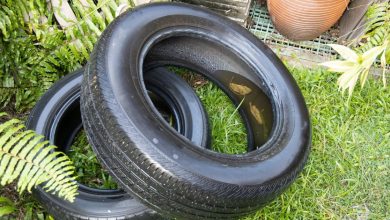The UAE’s Ministry of Health and Prevention (MOHAP) takes all necessary precautions complemented with a robust smart monitoring system that ensures the safety of its 10-million-strong residents all over the country from Monkeypox.
The transmission rate of monkeypox among humans, according to Dr. Fatma Al Attar, Official Spokesperson of MoHAP, is relatively low, noting that the first monkeypox case in the country has been detected and the patient is receiving the necessary medical treatment.
Dr. Al Attar emphasized that the UAE has been making significant efforts for over two years to protect the community’s health and safety by supporting the health sector and its qualified human resources, as well as providing all necessary medical resources to address the ramifications of the COVID-19 pandemic.
MOHAP reported the first confirmed case of the monkeypox virus in a 29-year-old woman from West Africa on May 24 – as part of its early detection and monitoring systems. This likewise reflects the health authority’s transparency and sense of urgency in keeping the public informed of the processes it takes to keep the virus at bay.
“(MOHAP affirms) that it is cooperating with other health authorities in implementing an epidemiological surveillance system, in accordance with the highest global practices, to ensure sustainable efficiency and community protection from communicable diseases, and rapid detection, as well as work to limit the spread of all diseases and viruses, including monkeypox, in the UAE,” read the statement from MOHAP.
In addition, authorities have conducted comprehensive contact tracing of the people who got in close contact with the patient and are monitoring their health.
As of press time, over 200 cases have been reported all over the world – most of which are in Europe. For their part, the World Health Organization states that they are currently collaborating with affected nations and others to increase disease surveillance in order to identify and help people who may be impacted, as well as to give recommendations on how to manage the disease.
“We continue to convene meetings of experts and technical advisory groups (such as the meeting of the Strategic & Technical Advisory Group on Infectious Hazards with Pandemic and Epidemic Potential [STAG-IH]) to share information on the disease and response strategies,” as per the statement from the WHO.
Fully prepared
The COVID-19 pandemic caused a massive stir among the public with the implementation of mandatory quarantine measures. However, what’s different about the Monkeypox virus is that the world has already faced this threat before and has successfully recovered from its ill effects.
MOHAP already laid out specific instructions to all medical facilities to handle suspected cases and report them to the ministry, as it continues to analyze and evaluate the severity of the sickness. Both the Abu Dhabi Department of Health and the Dubai Health Authority have laid out all necessary steps to ward off the virus, with a mandate to report suspected cases as early as May 20.
“We have put in place precise mechanisms for diagnosing suspected patients. The technical advisory team for pandemic control has also prepared a comprehensive guide for surveillance, early detection of the disease, management of clinically infected patients, and precautionary measures,” read the statement from the ministry.
MOHAP likewise urged the public to get information from official sources in the UAE and to avoid spreading rumors and incorrect information, emphasizing the significance of remaining up to current on developments and directives published by UAE health authorities.
Common symptoms
One of the most common sentiments among the public is the jarring visual impact of individuals affected by the Monkeypox. Photos from the World Health Organization (WHO) and the Centers for Disease Control and Prevention (CDC) in the USA show skin eruptions. WHO states that these skin eruptions appear within 1-3 days from the appearance of fever. The rash usually appears on the face and extremities. It typically affects the face, the palms of the hands, and the soles of the feet (in 75 % of cases). Oral mucous membranes (70%), genitalia (30%), conjunctivae (20%), and the cornea are also impacted.
Confirmed Monkeypox cases can transmit the virus through close human contact and the symptoms usually appear anytime from 0-5 days where the patient will suffer from symptoms such as fever, intense headache, back pain, myalgia (muscle aches), intense asthenia (lack of energy), and lymphadenopathy (swelling of the lymph nodes). The last-mentioned symptom – lymphadenopathy is what separates monkeypox from the usual cases of smallpox.
Monkeypox’s symptoms often last 2 to 4 weeks. Severe instances are more prevalent in children and are associated with the degree of viral exposure, patient health state, and the nature of complications. Immune deficits may contribute to worse outcomes.
Although immunization against smallpox was formerly effective, people under the age of 40 to 50 may now be more vulnerable since smallpox vaccine programs have been either suspended or stopped entirely. However, WHO states that individuals can still opt to take smallpox vaccine that was proven to be 85 per cent effective in either preventing Monkeypox or resulting in only a mild illness if ever the individual still catches the virus. As of this time, Moderna, an MRNA vaccine-maker, is already working on a vaccine against this specific virus.




